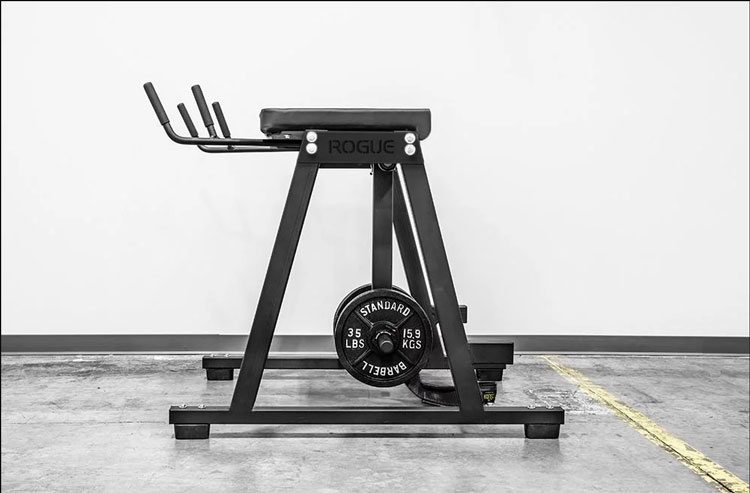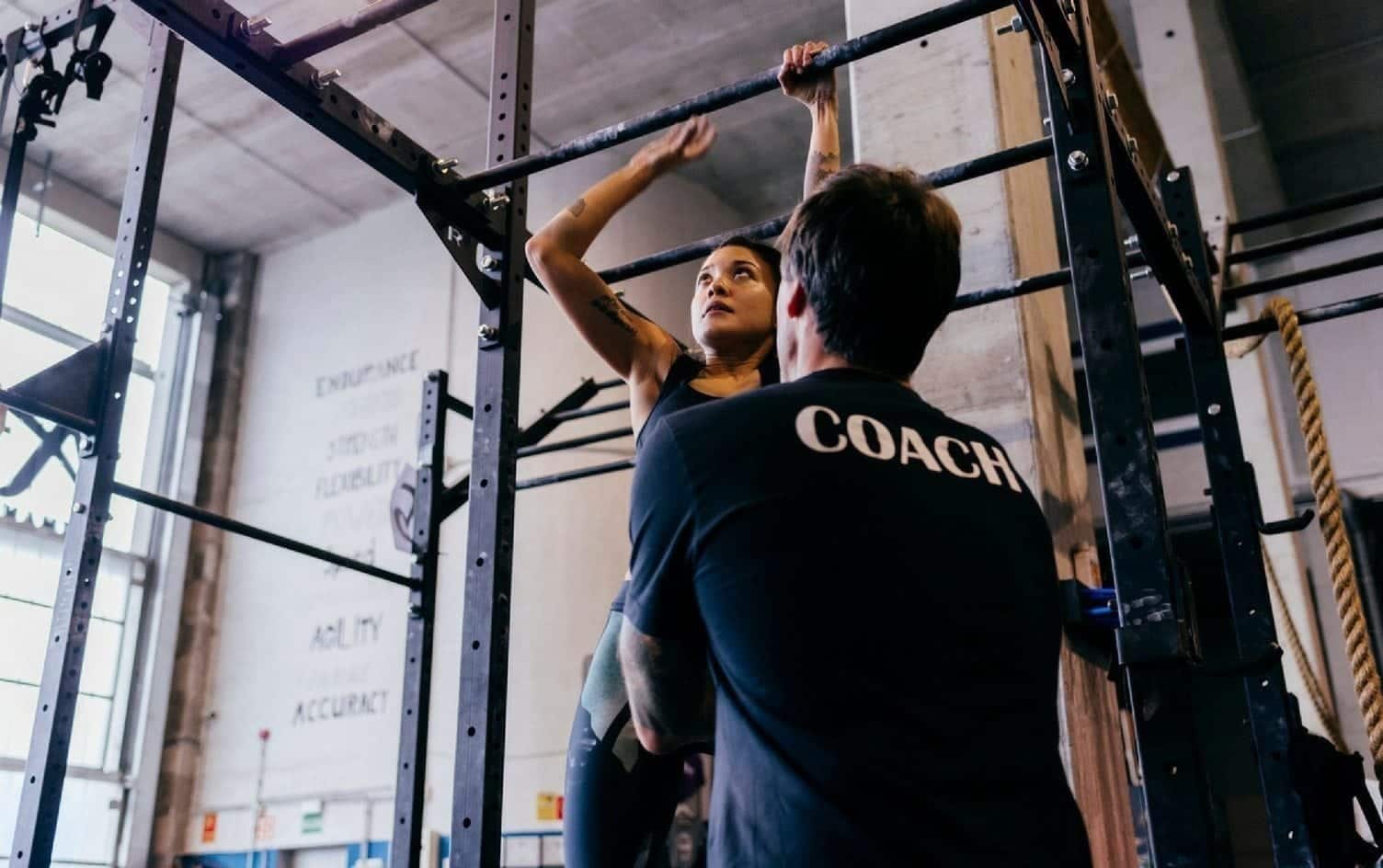It’s easy to fall into a rut when it comes to the gym. Lots of people rely on the same workout tools over and over out of convenience and comfort. But if you’ve been working out for a while, keeping your body and brain guessing can be the key to getting stronger and leaner. That means focusing on variety — whether it’s adding new movements, new equipment or both.
From classic gym mainstays that most people ignore to innovative equipment that’s just hitting the market, here are some workout tools and machines trainers say you should incorporate into your workouts for enhanced results.

Those bracket-like metal or PVC pieces you see laying around the gym floor aren’t just for doing pushups and dips. “Parallettes are an extremely versatile tool that takes up little space and can be used to create a full-body workout,” explains Ren Allen, a certified personal trainer and owner of Fit Life by Ren. Allen recommends them if you’re tired of doing exercises like air squats and situps, but want to get some bodyweight work in. “Parallettes develop total body strength, coordination, accuracy, agility and balance through the use of dynamic exercises and static holds,” she adds.
Try using them for static exercises like tuck holds and L-sits, cardio moves like lateral jump-overs (jumping from side to side over them), burpees over the parallette and strength exercises like pushups and parallette pass-throughs, where you start in a plank with your hands on the parallettes, then jump your feet through your hands, land in a reverse plank, then jump back to the start.

If you’re plateauing with your standard barbell routine, try incorporating some landmine moves. “It’s very likely that if you look at the bottom of the squat racks in your gym, you’ll find a landmine base,” notes Megan Graff, DPT, and certified strength and conditioning specialist. The landmine apparatus looks like a small metal tube that you slide one end of a barbell into, leaving the other end free for you to work with.
“Facing the base, holding the end of the barbell, you can squat then press overhead, do bent-over rows or try an exercise called barbell half moons, where you’re standing facing the base with arms straight overhead and keep your hips and shoulders squared forward. Bring the barbell down to shoulder level on one side and then the other — like you’re trying to trace a rainbow in front of you,” Graff suggests.
While it’s easy to work all parts of your body using landmine exercises, it’s an ideal piece of equipment for people who are looking work on their core stability. “You’re having to work harder in all these movements to keep the barbell from letting your whole body rotate,” she explains.

Most gyms have this machine, but it’s not nearly as popular as it should be, according to Adam Friedman, a certified strength and conditioning coach and the founder of Advanced Athletics in Los Angeles. “The reverse hyperextension machine helps to improve back and hip health, two often-overlooked areas of the body, so it’s not surprising the machine is ignored as well.” By targeting the glutes and hamstrings, the machine trains the hip-hinge movement present in other common workout moves like deadlifts and kettlebell swings.
Using this machine could also help keep you limber. “This movement has the benefit of creating spinal disc decompression by bringing moisture, oxygen and nutrients back into the disc,” Friedman explains. “This is especially important as we age.”
To use the machine, place your feet in between the pads on the lever arm, your torso on the padded platform, hips at the edge of the pad, and your hands on the handles. Pull on the handles to create tension in your core, then raise your lower body with straight legs until fully extended. Lower back to the start and repeat, focusing on your glutes, abs and lats.

Grip strength is an oft-overlooked element of fitness, but it’s key for nailing landmark exercises like chin-ups and deadlifts. FatGripz are a rubber tool that you can put over the handles of dumbbells, barbells, pullup bars and many cable attachments to increase the thickness of what you are griping and thus, work your grip strength, explains Mike Kneuer, certified personal trainer, nutrition coach and retired professional physique athlete. “They make the thing you’re grabbing more difficult to hold by increasing the surface area and forcing you to squeeze the handle harder because your hand does not wrap all the way around the bar,” he says.
While that might not sound like the most fun thing ever, it does have the potential to lead to strength gains. The NSCA Journal of Strength and Conditioning Research found that training with a thicker barbell increased muscle activation, since thicker handles require more muscles to be recruited with each movement. These are also joint-friendly when lifting, Kneuer says, because they place the weight of the bar over a larger portion of your hand.
READ MORE > TRAINERS REVEAL TOP MYTHS ABOUT FITNESS

If your gym has one of these, don’t ignore it. “This machine is excellent because it challenges not only your entire body, but also your mind,” Friedman says. There’s definitely a time and place for zoning out on the treadmill or elliptical, but this climbing cardio machine requires your full attention to keep up with the revolving bars. “The Jacob’s Ladder machine requires that you focus on the coordination of hand and foot placement while maintaining good posture,” he says. “Most cardiovascular machines can put your nervous system to sleep, mostly challenging the lower body exclusively.” But you can achieve better results through using a machine where your whole body is involved, he explains. So next time you see one of these, hop on.

The most common active recovery tool these days is the foam roller, but there are actually quite a few other useful pieces of equipment out there that are meant especially for mobility work. “The need for recovery programs and tools for improved mobility and stability has come to the forefront due to our increased sitting/texting/sedentary ways,” notes Brian Nguyen, CEO of Elementally Strong. “Ironically, the tools for said recovery are not high-tech at all.” His tool of choice? A wooden stick like the ones from StickMobility or simple PVC pipe, often found up against the wall of the gym.
“If you want to move better, it’s time to add a few minutes of work using this ‘new’ device to your routine,” Nguyen says. “They are phenomenal for technique training, active stretching, pushing, pulling, even assisting with difficult patterns.” Nguyen particularly likes the StickMobility tool because it incorporates torque, allowing you to bend it to get a deeper stretch or more core activation. Try using any stick-like tool to loosen your shoulders with wide-grip pass-throughs, stretch hamstrings with good mornings or massage calves and quads with the stick itself.




